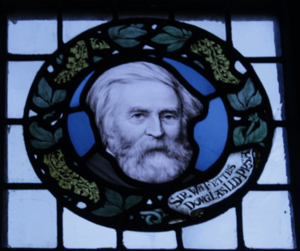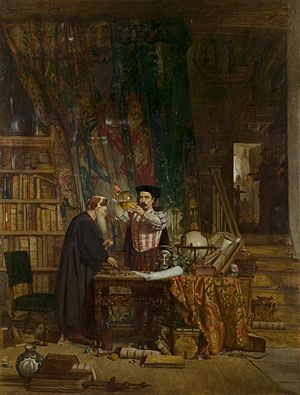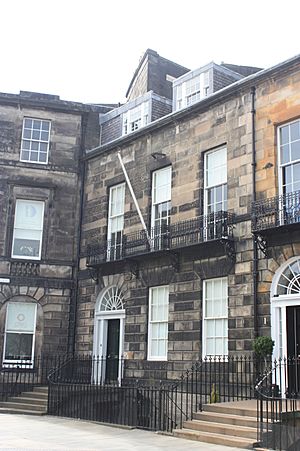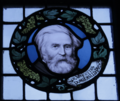William Fettes Douglas facts for kids
Sir William Fettes Douglas (1822–1891) was a famous Scottish painter and art expert. He even became the President of the Royal Scottish Academy, a very important art group in Scotland.
Contents
Early Life and Artistic Journey
William Fettes Douglas was born on March 12, 1822, in Edinburgh, Scotland. His father, James Douglas, worked at a bank, and his mother, Martha Brook, was related to a famous person named Sir William Fettes, who started Fettes College.
After finishing school at the High School of Edinburgh, William started working at the Commercial Bank of Scotland in 1836. His father was also an artist in his free time, and he encouraged William to paint and draw. William spent ten years working at the bank, using his spare time to practice his art.
Becoming a Professional Artist
In 1847, William decided to become a full-time artist. He didn't have much formal training, only a few months at the Trustees' Academy. But he taught himself by drawing very carefully and accurately. He also took classes in botany (the study of plants) and anatomy (the study of the body) at the university. Later, he painted outdoors with other artists like the Faeds and Alexander Fraser.
In 1845, his paintings were shown for the first time at the Royal Scottish Academy. People noticed his talent quickly. In 1851, he became an associate member, and just three years later, he became a full member.
Famous Paintings and Style
Some of William's best paintings were created around this time. These include The Ruby Ring (1853), The Execution (1854), The Alchemist (1855), and The Rosicrucians (1856). Many of his works show his interest in mysterious subjects and history.
His paintings often had a style similar to the Pre-Raphaelite Brotherhood, a group of artists who focused on detailed work and rich, beautiful colors. Later important works include The Summons to the Secret Tribunal (1860) and The Spell (1864).
Art Expert and Leader
In 1859, William visited Italy for the first time. He spent a lot of time studying old coins, ivory carvings, beautiful enamel art, and fancy bookbindings. He later built a wonderful collection of these rare and beautiful items. Many of his smaller paintings show these objects in great detail.
William was known for his deep knowledge of art. This made him a perfect fit to be the curator of the National Gallery of Scotland. A curator is someone who manages and takes care of an art collection. He held this job from 1877 to 1882.
Leading the Royal Scottish Academy
In 1882, William was chosen to be the President of the Royal Scottish Academy. This was a very high honor. He was even knighted by the Queen, becoming "Sir" William Fettes Douglas. In 1884, the University of Edinburgh gave him an honorary degree.
After 1870, he started painting more landscapes, which are pictures of nature. Stonehaven Harbour and A Fishing Village (both from 1874-1875) are considered some of his best landscape paintings. He lived at 21 Coates Crescent in Edinburgh during this time.
Later in his life, after a serious illness, he mostly painted with water-colors. His water-color drawings are small but very charming.
Where to See His Art
You can find William Fettes Douglas's works in many famous museums. The National Gallery of Scotland has three of his paintings. The Alchemist is at the South Kensington Museum, and Bibliomania is at the Glasgow Corporation Galleries. His art is also displayed at the Harvard Art Museums, the National Portrait Gallery, the Tate Gallery, and the Victoria and Albert Museum.
Later Life and Family
Sir William Fettes Douglas passed away on July 20, 1891, in Newburgh, Fife. He is buried in Dean Cemetery in Edinburgh with his family.
Family Connections
His youngest brother was Charlie Douglas, who became a famous explorer in New Zealand.
In November 1880, William married Marion Grahame. They did not have any children. A portrait of Sir William, painted by Sir George Reid in 1883, hangs in the library of the Scottish Academy.
Images for kids









